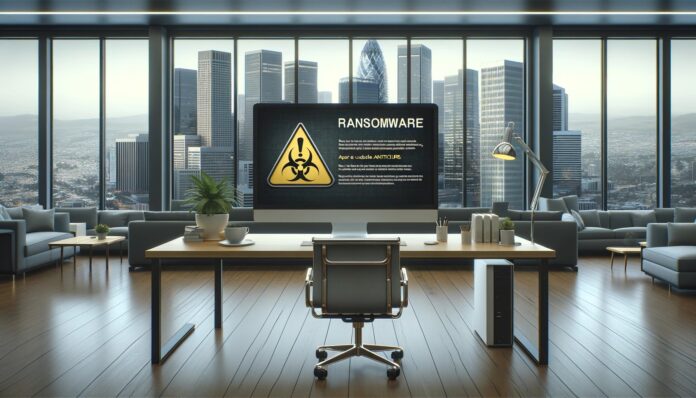
Ransomware Attack on Fraunhofer Institute: A Rising Threat
In a troubling incident that has raised alarms across the cybersecurity landscape, the Fraunhofer Institute for Industrial Engineering (IAO), based in Stuttgart, Germany, has fallen victim to a sophisticated cyberattack. The attack, which occurred shortly after Christmas 2024, is believed to have been carried out by a relatively unknown ransomware group, marking yet another significant blow in the ongoing battle against cybercrime. Fraunhofer, a renowned research and development institution, specializes in advancing cutting-edge technologies in industrial engineering and artificial intelligence, making it an attractive target for hackers looking to exploit sensitive data.
Despite the scale of the attack, Fraunhofer’s dedicated cybersecurity team responded quickly and effectively. According to official statements, the institution’s incident response team worked swiftly to mitigate the risks, preventing the attackers from causing further damage. However, the attack has led to considerable disruption in the institute’s operations, affecting its day-to-day research activities and potentially compromising valuable intellectual property.
As of now, Fraunhofer has refrained from confirming any specifics regarding the identity of the ransomware group behind the attack. The institution has pledged to release more details as the investigation unfolds. Initial reports, however, suggest that sensitive research-related data may have been stolen. These claims, circulating through various digital media channels, have yet to be verified, as Fraunhofer continues its internal probe to determine the full extent of the breach.
This attack on Fraunhofer underscores the growing threat posed by ransomware groups, which have increasingly targeted high-profile research institutions, government agencies, and private enterprises in recent years. These cybercriminals are becoming more brazen in their tactics, demanding significant ransoms while threatening to leak or sell stolen data. As institutions like Fraunhofer work to secure their systems and recover from the attack, the larger cybersecurity community is left grappling with how to defend against these evolving and increasingly sophisticated threats.
Nikki Universal Hit by the Hunters International Ransomware Group
Another alarming ransomware attack has recently rocked the corporate world, this time involving the Japan-based chemical company Nikki Universal. On December 22, 2024, the company fell victim to a highly coordinated attack by the notorious ransomware group known as Hunters International. This group, which has built a reputation for targeting organizations in the finance and healthcare sectors, has now expanded its reach to the chemical industry, raising concerns about the growing diversity of its targets.
The attack encrypted sensitive company data, bringing operations to a halt. By December 27, 2024, Nikki Universal confirmed that the cybercriminals had managed to compromise a staggering 750GB of company data, including over 460,000 files containing sensitive business and financial information. The scale of the breach is significant, as the compromised data could include proprietary research, client information, and other critical materials that could have devastating consequences for the company if exposed.
The hackers behind the attack have issued a chilling ultimatum: Nikki Universal must meet their demands by January 10, 2025, or face the release—or even sale—of the stolen data on the dark web. The ransomware group has made it clear that failure to comply will result in the data being leaked to the public or sold to the highest bidder, placing the company in a precarious position. The threat of having sensitive information made public or traded on the dark web has become a common tactic used by ransomware groups to force organizations into paying up.
One of the most concerning aspects of the Hunters International group is its reported use of artificial intelligence (AI) in launching cyberattacks. This technological advancement is enabling the group to carry out attacks with a level of precision and sophistication that makes them particularly difficult to detect and mitigate. The integration of AI into cyberattacks allows for faster encryption of data, more targeted and efficient infiltration of systems, and a higher likelihood of success in evading traditional security measures. As a result, law enforcement agencies and cybersecurity firms are facing an increasingly difficult challenge in combating this evolving threat.
Hunters International’s use of AI in their operations is a stark reminder of how cybercrime is adapting to technological advancements. These attacks, now powered by AI, are not only more challenging to defend against but also represent a troubling shift toward more complex and organized cybercriminal activities. Experts warn that as AI-driven cyberattacks continue to increase, traditional anti-malware software and conventional cybersecurity strategies may become less effective. This escalation in sophistication is making it all the more crucial for organizations to adapt their security protocols and stay one step ahead of these emerging threats.
The Growing Threat of AI-Powered Ransomware
Both the Fraunhofer Institute and Nikki Universal incidents serve as a stark reminder of the ever-evolving landscape of cybersecurity threats. As ransomware attacks become more frequent and increasingly sophisticated, businesses and institutions of all sizes must remain vigilant. The rise of AI-powered cyberattacks adds a new layer of complexity to an already difficult problem, requiring organizations to rethink their strategies and invest in more advanced cybersecurity measures.
In response to these challenges, experts recommend that companies adopt a multi-layered defense approach that includes regular data backups, robust encryption, and continuous monitoring for unusual activity. Furthermore, the ability to quickly identify and respond to attacks, as demonstrated by Fraunhofer’s rapid intervention, is becoming an essential component of modern cybersecurity strategies.
With cybercriminals becoming more brazen and innovative in their tactics, the need for improved cyber resilience and better cooperation between law enforcement and cybersecurity experts is more critical than ever. As we move into 2025, it is clear that the battle against ransomware will only intensify, and businesses must take proactive measures to protect themselves from this growing menace.
Ad
Join over 500,000 cybersecurity professionals in our LinkedIn group “Information Security Community”!
